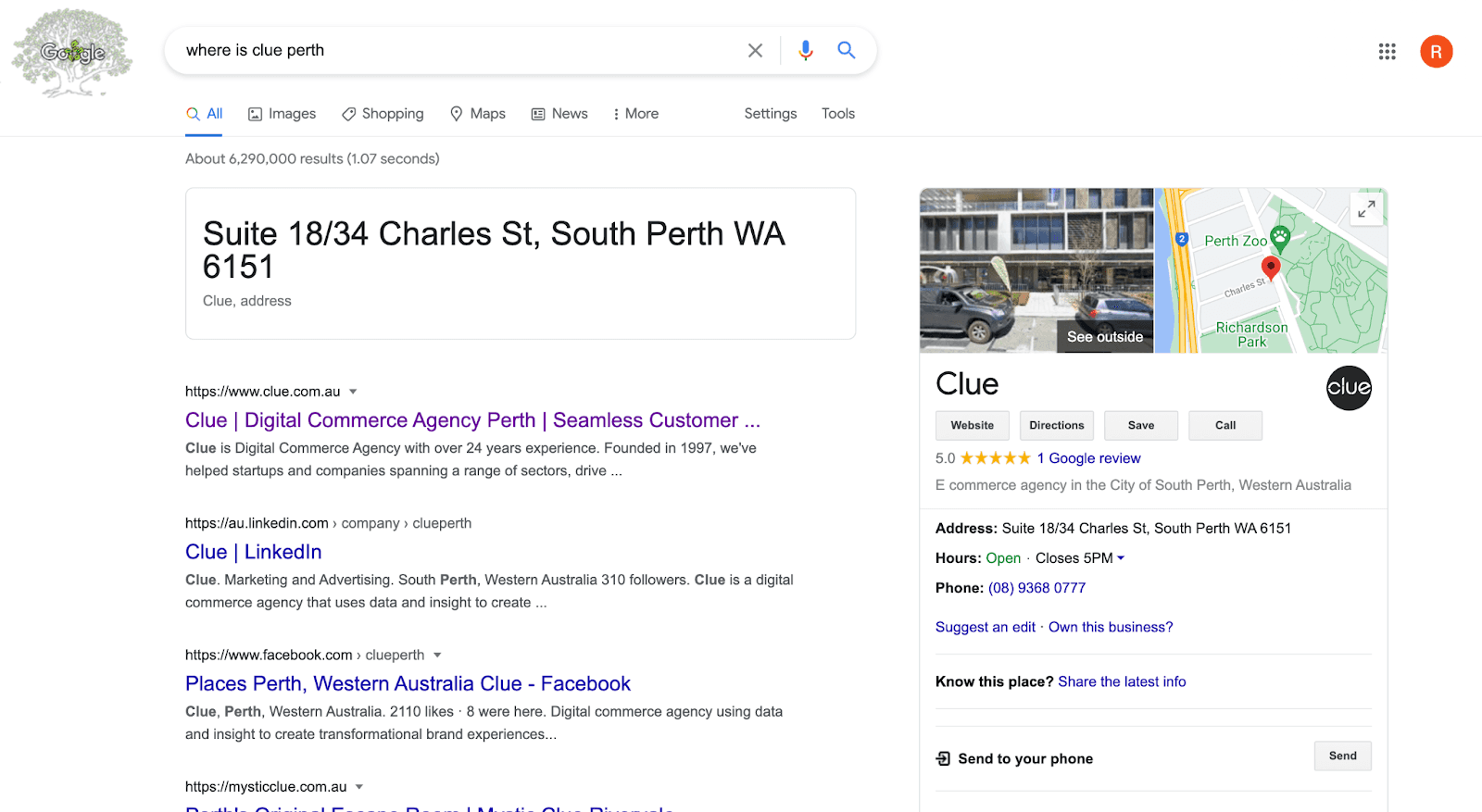The Rise of Zero Click Search
We delve into Google’s supposed trend of “click cannibalisation” and what it might mean for your SEO strategy.
“Just Google it.”
If we were playing a game of family feud, that response would definitely be in the top five for the category – “Common but annoying replies when asking someone a question.”
Google’s evolution from noun to verb has occurred in tandem with their growing digital domination.
From desktop to mobile, all the way to voice search, Google has completely unshackled human access to knowledge and information. As a matter of fact, Google has wholly transformed the consumer experience, giving us the ability to find/purchase/acquire pretty much anything we could possibly want.
In an effort to continue refining and improving the user search experience, there has been an undeniable rise in zero click searches across Google.
What is zero click search?
Zero click search refers to a search engine results page (SERP) answers the query so there’s no need for someone to go further. In other words, zero clicks are needed to answer the query.
For example, if you were looking for Clue’s address (why not stop by for a coffee? ☕) and Google search “Where is Clue Perth?” – you don’t actually have to click any further than the SERP because right at the top is the address in plain sight: Suite 18/34 Charles St, South Perth WA 6151

These responses are designed to improve user experience; creating instantaneous access to desired information while ensuring users do not bounce to a different site.
What does this mean for SEO/SEM?
A controversial article by SEO icon and Sparktoro found, Rand Fishkin stated only 35% of searches resulted in a click across 2020. Rand accused Google of “click cannibalisation,” in an effort to optimise towards profits. In response, Google stated that they continue to “send billions of visits to websites every day, and the traffic we’ve sent to the open web has increased every year since Google Search was first created.”
For many experts in the world of search, the rise in zero click searches can complicate existing search engine optimisation (SEO) and search engine marketing (SEM) efforts.
This is because a zero click search that fulfills a users query at the SERP can significantly impact search visits. The argument goes that previously valuable keywords may become less effective or efficient as user searches start and end within the search engine. This can still occur even if search volume remains consistent or even grows.
Though the full extent of zero click search is still yet to be determined, there is no doubt that SEO/SEM remains vital to an organisation’s presence in the search ecosystem.
Refining SEO in the face of zero click search
Nevertheless, we have a number of strategic tweaks your business can adopt that will ensure your SEO/SEM efforts remain fruitful.
Consider the context
When planning your response to the rise of zero click searches, it is important to ask the question, what are people searching for? Through the Search Engine Journal, statistician Jennifer Hood outlined that certain queries may lend themselves more toward zero click search. Examples can include addresses, phone numbers and lyrics to a song.
More complex queries that require in depth explanation and a broader context may not be able to be fully satisfied through zero click search. So consider, what complex queries your audience need answering and look to fulfill them through your SEO/SEM strategy.
Focus on clicks-per-search
As zero click search becomes more commonplace, a measure that will become increasingly important is clicks-per-search (CPS). This data goes beyond how many people are searching for a given keyword term or phrase. Instead, CPS collates the rate of traffic specific keywords capture from users that discover your site through search.
Edward James from Search Engine Watch believes that if your pages rank well but have a low CPS, “it’s time to optimise your content for related keywords with a better CPS rate.”
Use relevant images and optimise accordingly
A key component of SEO/SEM that is often overlooked is the use of relevant and optimized imagery. Including imagery and video in your strategy can be incredibly beneficial, especially in the world of zero click search.
Consider how the copy and images included in featured snippets on SERPs are selected from different sites. For instance, optimizing your visual content through comprehensive alt-text and appropriate image filenames can improve image search results. Not only that, if your business’ copy is not selected for a SERP featured snippet, your visual content might be – giving you the opportunity to capture attention once more.
Zero click doesn’t mean zero competition
“If you are not taking care of your customer, your competitor will.”
Bob Hooey wasn’t talking about zero click search when he said this, but his intention still applies. Yes, zero click search will undoubtedly transform the search ecosystem and consumer behaviour moving forward. But innovation and change is ever present. Being aware of these changes, planning for their impact and remaining customer-centric remains foundational.
As long as people are searching, you have an opportunity to provide the answer.







